Manuscripts Etc.
| CLOSE WINDOW |

|
The following items are drawn from the William Faulkner Foundation Collection at the University of Virginia's Albert and Shirley Small Special Collections Library (http://small.library.virginia.edu/). |
|
Faulkner wrote "Red Leaves," his first imaginative engagement with the native American population that aboriginally inhabited northeast Mississippi, sometime before 24 July 1930. That was when he submitted it to The Saturday Evening Post, which immediately accepted it and published it three months later. The manuscript shows few signs of revision, but one interesting moment occurs in the third paragraph of its first page (below left): Faulkner originally gave the "second" Indian the name "Yo-ko-no-pa-taw-fa." Perhaps by the time he crossed that out, he had already decided that the name, spelled a bit differently, was better suited for the whole county. "Red Leaves" is also Faulkner's first direct representation of slavery as part of Yoknapatawpha's past. Taken together, the opening passages in the manuscript, the typescript (below center) and the story's original publication (below right) reflect a revisionary struggle about how to represent or describe plantation life. In the first sentence of the manuscript the two Indians walk "toward the quarters." When Faulkner typed the story to send it to the Post, he has them walk "toward the Quarters." When the Post published the story, they walk "toward the slave quarters" - an elaboration that may have been added by the magazine. Similarly, in the manuscript the slaves live in "houses" in both the first and third paragraphs. In the typescript, the third paragraph says "cabins." In the Post, the "houses" in paragraph one are explicitly identified as "the houses in which lived the slaves belonging to the clan." In Faulkner's fiction generally, and in the southern culture it describes, the distinction between "house" and "cabin" signifies a great deal, especially about the proper place of both black and white races. Even as he shifts the fact of slave-owning from white to "red," Faulkner may have been anxious properly to maintain that distinction. 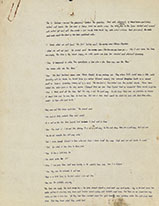 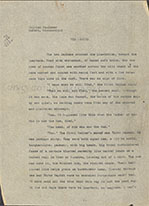 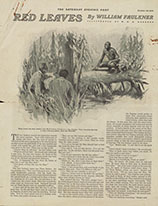 Below are the next three pages of the manuscript. They show few changes in the dialogue, but it's interesting to note that in the manuscript's second page (left), the slaves have gathered in the "central house"; this becomes "central cabin" in the typescript. Faulkner's concern with race is also apparent on the third page of the manuscript (center). There the New Orleans woman whom Doom gets pregnant is described as "the daughter of a well-to-do family (tho they had some negro blood)." In the typescript he identifies the family instead as "West Indian," and deletes the reference to their "negro blood." However, the reference to the woman's "negro blood" on page 4 (right) remains in both the typescript and published text. Given the abrupt way it appears - "her fans and [airs] and negro blood" - Faulkner may have forgotten he'd cancelled the earlier reference, or he may have expected the words "West Indian" by themselves to alert his readers to the possibility of racial mixing and "negro blood." 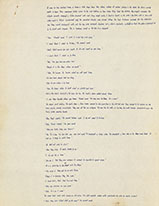 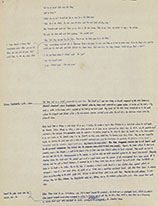 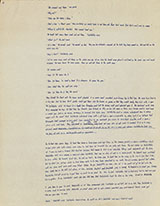 Below left: Two of the more heavily revised manuscript passages are at the end of section IV and the start of V - as numbered in the published story. Note that Faulkner has not yet written the last two sentences of IV, with their poignant expression of the slave's human longing to live. In V, he adds a very Faulknerian passage about Moketubbe's thoughts during the hunt. Below center: These two passages, now including the slave's "quiet" and "amaze[d]" words about living, as Faulkner revised them while typing his manuscript. Below right: Also during the typescript stage of composition, he uses his typewriter's slash key (/) to cancel a similarly Faulknerian passage about the slave's thoughts on the verge of running away. 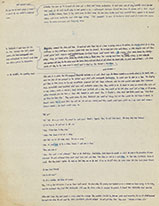 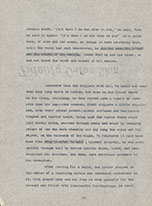 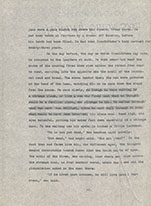 Below: the way the story's second page looked in the Post, with two more illustrations by W. H. D. Koerner. Many of the magazine versions of Faulkner's short stories were illustrated; the ones published in The Saturday Evening Post always were.  Citing this source:
|
